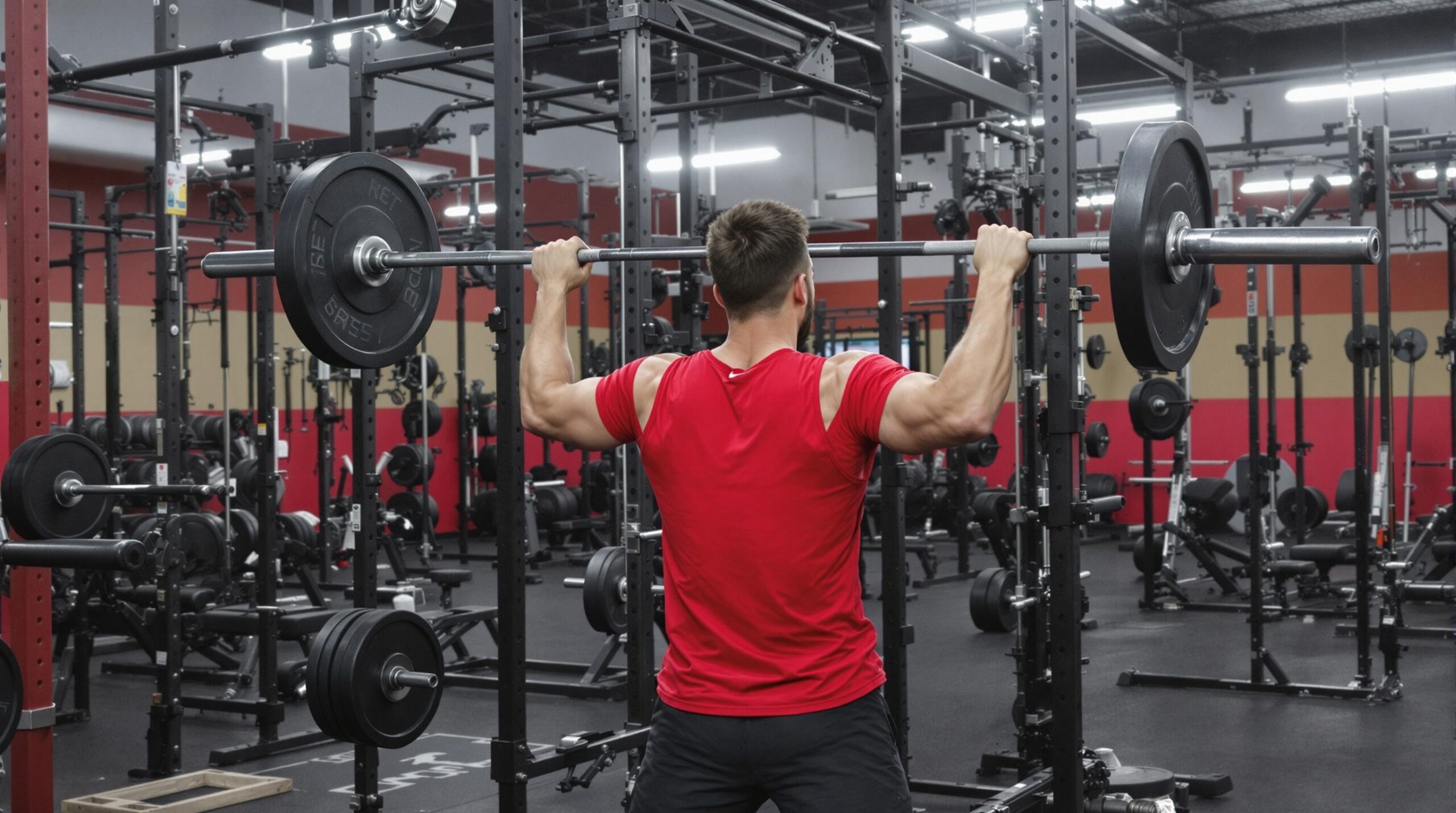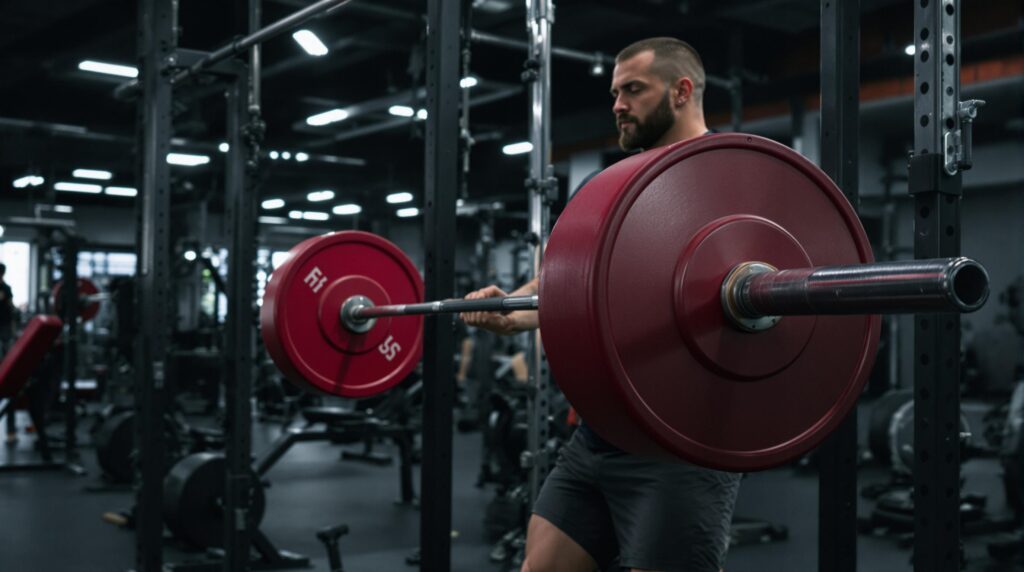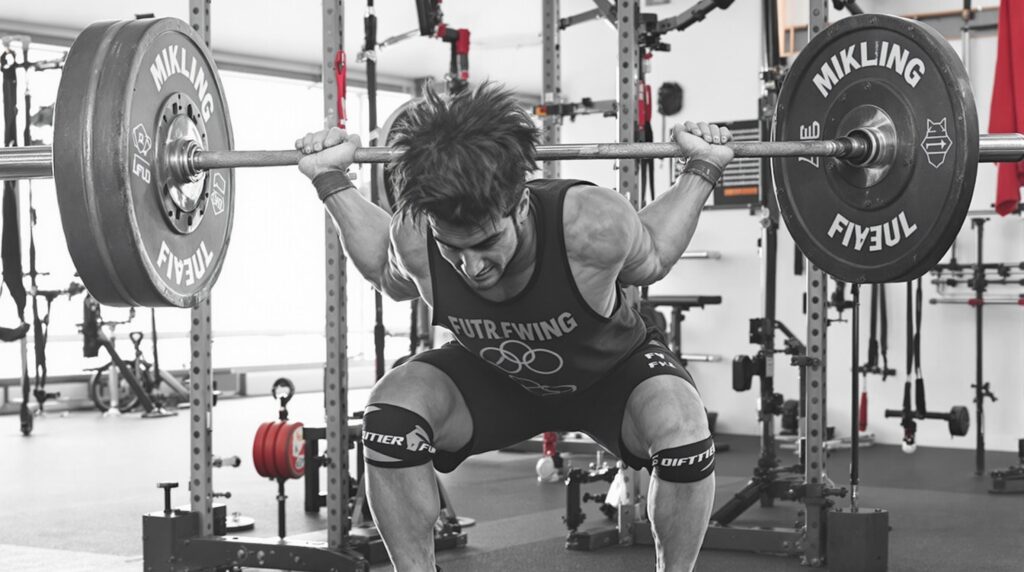Strength training with a gym barbell offers unparalleled opportunities to build strength, power, and muscle mass using time-tested methods backed by science. The barbell remains the cornerstone of serious strength development in 2025, with advancements in both equipment specifications and training methodologies making it more effective than ever for achieving impressive physical transformations.
Key Takeaways
- Modern high-performance barbells now feature tensile strength exceeding 215,000 PSI, allowing for safer lifting at extreme weights
- The 5/3/1 “Boring But Big” protocol has emerged as the dominant training methodology for simultaneous strength and size gains
- After 3-4 years of consistent training, lifters should target 2.5x bodyweight deadlifts and 2x bodyweight squats
- Sport-specific barbell designs vary in diameter from 25mm to 29mm based on lifting discipline and gender
- Proper barbell maintenance requires weekly cleaning and periodic lubrication to maintain performance and extend equipment life
The Cutting Edge of Barbell Training in 2025
The landscape of strength training has evolved dramatically with the gym barbell remaining at the center of effective strength development. Research-backed protocols now demonstrate that the 5/3/1 “Boring But Big” method delivers superior results for both strength and hypertrophy compared to traditional approaches. This system combines heavy compound movements with high-volume supplemental work, creating the optimal stimulus for muscle growth and strength adaptation.
Material technology has also advanced significantly, with premium barbells now exceeding 215,000 PSI tensile strength specifications. This allows for unprecedented load capacity and durability while maintaining optimal bar performance characteristics. For serious lifters, these advancements translate to safer training at extreme weights and better longevity from their equipment investments.
The 2025 USA Powerlifting Spring Challenge in Los Angeles on April 26 will showcase the practical application of these cutting-edge barbell training methods. Elite competitors using these record-holder training secrets will demonstrate the effectiveness of properly implemented barbell programs.

Selecting Your Perfect Barbell: Technical Specifications and Sport-Specific Designs
Choosing the right barbell requires understanding the technical specifications that influence performance. High-performance barbells require 190,000-215,000 PSI tensile strength to withstand repeated heavy loading without permanent deformation. The Rogue Ohio Power Bar leads the market with 205,000 PSI tensile strength and IPF-approved volcano knurling for competitive powerlifting.
Different lifting disciplines demand sport-specific barbell designs. Here’s what to look for based on your training focus:
- Powerlifting Bars: 29mm diameter shafts with minimal whip and aggressive knurling for maximum stability under heavy loads
- Olympic Weightlifting Bars: 28mm whip-enabled bars that flex and rebound during dynamic movements
- General Fitness Bars: 28.5mm dual knurl-marked bars offering versatility for various lifting styles
Women’s barbells maintain a standard 15kg weight with a thinner 25mm diameter to accommodate smaller hand sizes. Youth training bars typically weigh 10kg with a 1.7m length for developing proper technique before advancing to full-sized equipment.
For Olympic weightlifting, yield strength should exceed 1,500 lbs static load capacity to handle the dynamic forces generated during cleans, jerks, and snatches. This specification ensures the bar can withstand the stress of being dropped repeatedly from overhead positions.
Proven Barbell Strength Standards: What to Expect at Each Training Stage
Understanding realistic strength benchmarks gives lifters clear targets to pursue throughout their training journey. According to the Art of Manliness, these standards provide reference points for progression at different experience levels:
After 6 months of consistent training, aim for:
- Squat: 1.25x bodyweight
- Deadlift: 1.5x bodyweight
- Bench press: 1x bodyweight
- Overhead press: 0.7x bodyweight
With 1-2 years of dedicated training, targets increase to:
- Squat: 1.75x bodyweight
- Deadlift: 2x bodyweight
- Bench press: 1.2x bodyweight
- Overhead press: 0.9x bodyweight
Advanced lifters with 3-4 years of experience should reach:
- Squat: 2x bodyweight
- Deadlift: 2.5x bodyweight
- Bench press: 1.5x bodyweight
- Overhead press: 1x bodyweight
For context, a 200lb athlete should target a 500lb deadlift after approximately four years of consistent, progressive training. These benchmarks apply to natural lifters following structured programs with proper recovery protocols.
Novice Programming: Your First 6 Months with the Barbell
Beginning your barbell journey requires a structured approach that balances technique development with progressive overload. Jim Wendler’s 5/3/1 foundation with 3×5 linear progression offers an ideal starting point for novice lifters.
I recommend alternating between two primary workouts in your free gym workout plan:
- Workout A: Back Squat (3×8-10), Bench Press (3×8-10), Bent-Over Row (3×8-10)
- Workout B: Deadlift (3×6-8), Pull-Ups (3×8-10), Overhead Press (3×8-10)
Training 3-4 times weekly with this A/B split creates the optimal stimulus for strength development while allowing sufficient recovery. Focus on mastering technique before aggressively increasing weights – form breakdown leads to plateaus and potential injuries.
Safety protocols are essential when handling free weights. Set safety arms at 1″ below chest level for bench press and parallel to squat depth for squats. Always use a spotter for near-maximal attempts, especially on bench press where failed repetitions can be dangerous without proper safety measures.
Intermediate and Advanced Programming: Breaking Through Plateaus
As you progress beyond novice gains, more sophisticated programming becomes necessary to continue making progress. The “Boring But Big” (BBB) variant has proven exceptionally effective, implementing 5×10 supplemental volume at 50% of one-repetition maximum (1RM) after main strength work.
A typical intermediate session following this protocol might look like:
- Main lift: 5/3/1 sets (working up to top set based on percentage of training max)
- Same movement: 5×10 at 50% 1RM (the “BBB” component)
- Assistance work: 5×10 of complementary movement patterns
For advanced lifters beyond three years of training, conjugate periodization offers the variability needed to overcome stubborn plateaus. This system alternates between maximum effort days (90%+ 1RM) and dynamic effort days focused on speed and power development.
An advanced program structure might follow:
- Day 1: Max Effort Squat (2×2 @ 95% of 1RM)
- Day 2: Dynamic Bench (8×3 @ 65% with explosive tempo)
- Day 3: Max Effort Deadlift (1×3 @ 90% of 1RM)
- Day 4: Dynamic Lower Body (10×2 speed deadlifts or squats)
This approach simultaneously develops maximal strength and power while managing fatigue through varied intensity. The ultimate workout routine should incorporate elements of both strength and hypertrophy training for optimal results.
Competition Preparation and Performance Optimization
Preparing for the 2025 USA Powerlifting Barbell Brigade Spring Challenge requires strategic planning to peak your strength at exactly the right time. A 12-week peaking cycle using RPE-based programming allows for autoregulation based on daily readiness while progressively increasing intensity.
Equipment verification becomes critical as competition approaches. Match the bar whip characteristics of your training implements to competition equipment – this minimizes performance surprises on competition day. Many powerlifting gyms keep competition-spec equipment for this specific purpose.
Attempt selection strategy can make or break your competitive performance. I recommend the following approach:
- Opening attempt: 90% of current 1RM (virtually guaranteed success)
- Second attempt: 97% of current 1RM (challenging but high probability)
- Third attempt: 102-105% of current 1RM (PR attempt but realistic)
This conservative-to-aggressive approach maximizes total while minimizing the risk of bombing out of the competition. Remember that a successful third attempt often separates podium finishers from the rest of the field.
Barbell Maintenance and Safety Protocols
Proper maintenance extends the life of your gym barbell and preserves performance characteristics. Knurling preservation requires weekly brushing with brass bristles to remove chalk buildup and prevent oxidation. Avoid acidic cleaners on chrome shafts as they can damage protective coatings.
Bearing and bushing care ensures smooth sleeve rotation. Apply 3-in-1 oil to rotating sleeves approximately every 5,000 lifts, or when rotation becomes noticeably less smooth. This simple maintenance step dramatically extends the functional lifespan of precision bearings.
Load management guidelines protect both equipment and lifter. Follow these limits:
- 28mm Olympic bars: Maximum 700lb load
- 29mm Power bars: Suitable for loads exceeding 800lbs
- Economy bars (



